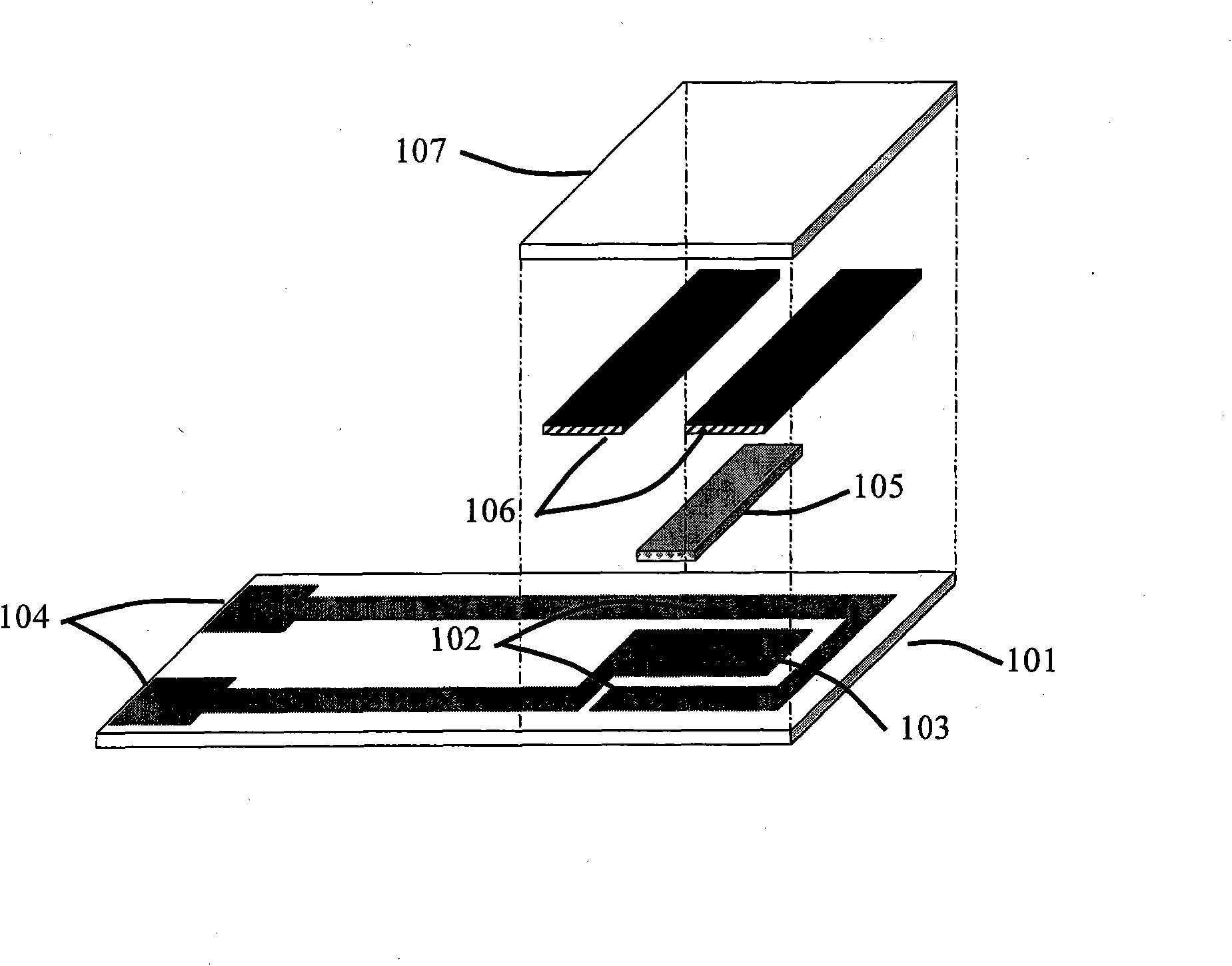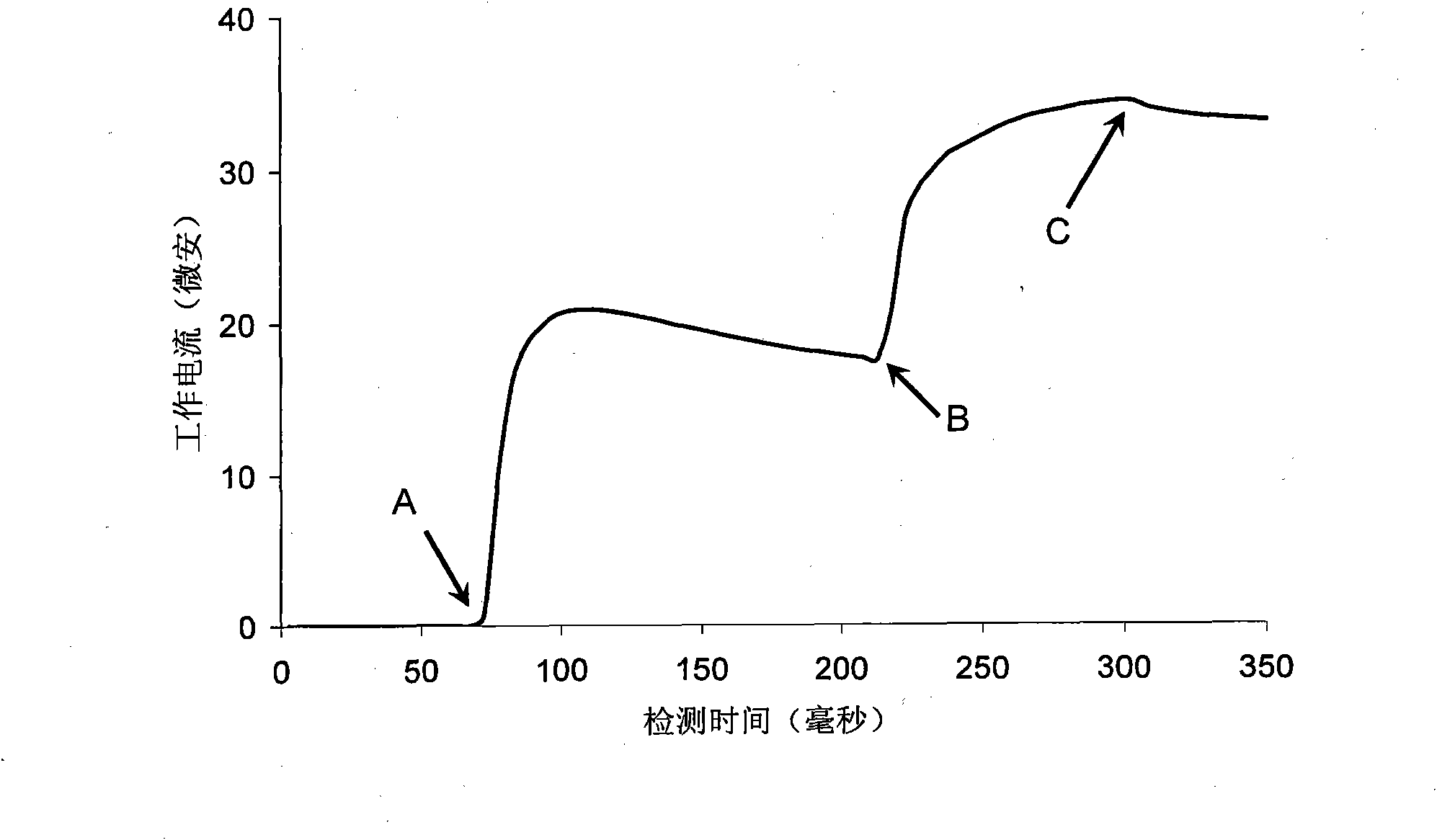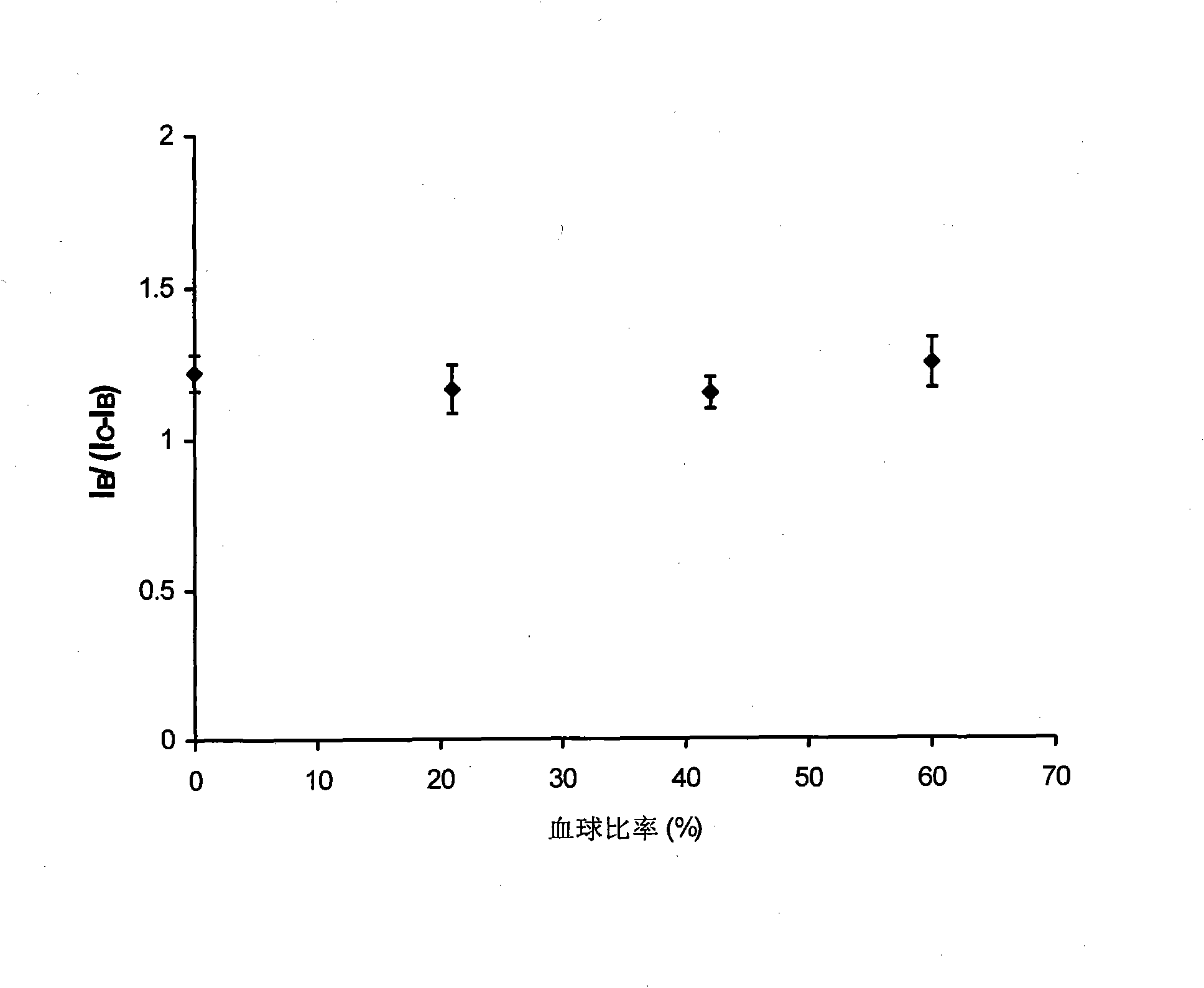Enzyme bioelectrochemical sensing chip and preparation and using methods thereof
A bioelectrochemical and sensor chip technology, applied in the fields of material electrochemical variables, gaseous chemical plating, circuits, etc., can solve problems such as the inability to use biochips, and achieve the effect of reasonable design, improved reliability and measurement accuracy
- Summary
- Abstract
- Description
- Claims
- Application Information
AI Technical Summary
Problems solved by technology
Method used
Image
Examples
Embodiment 1
[0080] Preparation and testing of gold electrode biochip with sample injection on one side of the embodiment
[0081] In this embodiment, the enzyme bioelectrochemical sensor chip (hereinafter referred to as the biochip) adopts a single-sided gold-plated polyester sheet. First, a main electrode 102 with two branch electrodes is formed on the same plane by electric ablation. and an auxiliary electrode 103. The rectangular auxiliary electrodes 103 are arranged in parallel between two rectangular branch electrodes of the main electrode 102 . The two branch electrodes of the main electrode 102 have the same width of 0.6 mm, and the width of the auxiliary electrode 103 is 1.2 mm. The spacing between electrodes is 0.05 micron. Then, stick one side of an insulating double-sided adhesive tape about 0.13 mm thick with an opening about 0.8 mm wide on the surface of the polyester sheet with electrodes. The rectangular opening of the double-sided adhesive is vertically superimposed on ...
Embodiment 2
[0090] Preparation and testing of two-terminal sample-filled gold electrode biochips
[0091] The biochip of this embodiment adopts the same single-sided gold-plated polyester sheet as in Embodiment 1, and a main electrode 102 with two branch electrodes and an auxiliary electrode 103 are formed on the same plane by electroablation. The rectangular auxiliary electrodes 103 are arranged in parallel between two rectangular branch electrodes of the main electrode 102 . The arrangement direction and size of the two electrodes on the polyester sheet are different from those in Example 1. please see Image 6 , which shows the structure of the biochip of this embodiment, the spatial positions and interrelationships of each part. The dimensions in the figure are for illustrative purposes only and are not to scale.
[0092] The two branch electrodes of the main electrode 102 have the same width of 1.0 mm, and the width of the auxiliary electrode 103 is 1.0 mm. The spacing between th...
Embodiment 3
[0097] Preparation and testing of the three-terminal sample-filled graphite electrode biochip of the embodiment
[0098] The two electrodes of the biochip in this embodiment are attached to the surface of the polyester sheet with conductive carbon ink by screen printing, and then dried to form a conductive graphite layer with a thickness of about 10 microns. The rectangular auxiliary electrodes 103 are arranged in parallel between two rectangular branch electrodes of the main electrode 102 . The two branch electrodes of the main electrode 102 have the same width of 0.8 mm, and the width of the auxiliary electrode 103 is 1.6 mm. The spacing between the electrodes is 0.2 microns. Then, use insulating ink to form an insulating layer with a thickness of about 5 microns and an opening of 4.0 mm (length) x 0.7 mm (width) on the surface of the polyester sheet with two graphite electrodes by screen printing and drying. . The rectangular opening of the insulating layer is vertically...
PUM
| Property | Measurement | Unit |
|---|---|---|
| size | aaaaa | aaaaa |
| thickness | aaaaa | aaaaa |
| thickness | aaaaa | aaaaa |
Abstract
Description
Claims
Application Information
 Login to View More
Login to View More - Generate Ideas
- Intellectual Property
- Life Sciences
- Materials
- Tech Scout
- Unparalleled Data Quality
- Higher Quality Content
- 60% Fewer Hallucinations
Browse by: Latest US Patents, China's latest patents, Technical Efficacy Thesaurus, Application Domain, Technology Topic, Popular Technical Reports.
© 2025 PatSnap. All rights reserved.Legal|Privacy policy|Modern Slavery Act Transparency Statement|Sitemap|About US| Contact US: help@patsnap.com



